GWA Newsletter: February
Barbara Kruger on the GWA Podcast; Art in Mexico City; + everything you need to see, listen to, read and do this month!
Happy February!
I hope you are well. I’ve just returned from Hay Cartagena, where I was lucky to meet readers from all over Latin America – plus, learn about so many great Colombian artists, from Ofelia Rodríguez to Feliza Bursztyn.
Highlights from the festival included Geoff Dyer (who compared walking through the city of Turin to “walking through a Giorgio de Chirico painting”); André Aciman (author of Call Me By Your Name, who spoke about writing ‘nostalgically’ and the memories we keep for our fantasies); Hisham Matar on friendship; Patrick Radden Keefe and Philippe Sands on the power of storytelling; Laura Osorio Sunnucks on the future of museums; and more. I recommend all of their books.
I’ve also spent a bit of time in Mexico City and, as part of my new monthly series for paid subscribers: Art in Cities, I wrote about all the art to see, what to do, where to eat, and more. Read it here. Which cities would you like to see featured?
OK! Here’s a rundown of all things GWA:
The Great Women Artists Podcast: Barbara Kruger
This week marks the final episode for Season 10 of the GWA Podcast – back in a couple months – and who better than Barbara Kruger to close it? The trailblazing artist is hailed for her distinctive red, white, and black poster-style language that sees her merge text and image to bring attention to urgent political concerns.
On promoting a singular idea of ‘greatness’:
“I think it's not just the institutions. It's sort of a compendium of how histories are written. Not just art histories, but literary history, and the great male diplomatic history. What constitutes greatness? What is that thing? This is not to devalue extraordinary abilities, skills, intelligence – whatever – but to just talk about the inflationary rhetoric that really works to make some people visible and others not.”
Click to listen. Don’t miss: Kruger’s exhibition at the Serpentine Galleries.
Podcast: Karon Davis
I spoke to groundbreaking artist Karon Davis, known for her life-size sculptures coated in white plaster dust that explore the possibilities of movement and dance, performance and politics. Our conversation traversed these themes.
On ‘why sculpture’ and her recent exhibition, Beauty Must Suffer:
“The tradition of it. The feeling of it. I love the process – number one – of touching the plaster, and being in the studio. The ritual of making sculpture gets me up in the morning. It makes me want to stay in the studio until late at night. Taking that form and being able to tell stories with it… This was my first time actually trying to tell a story with sculpture, by doing a ‘frozen ballet’, I’m calling it. How can I take someone through a story, with moving and telling a story without movement?”
Click to listen. I wrote about Davis for The Guardian a few months back.
Podcast: Tamara de Lempicka
I also spoke to curator and scholar Furio Rinaldi on Polish-born painter Tamara de Lempicka. Drawn to her work for Lempicka’s “appreciation of the great renaissance tradition”, Rinaldi, who is curating the first major US retrospective of her work at FAMSF, deep-dived into her extraordinary life:
On Woman in Green (1929; top right):
“There’s a very famous painting called Woman in Green, at the Pompidou. It shows a blonde woman – in fact, it’s suppose to be a self-portrait. With Lempicka, you always have this self-identification with her subjects. She sees herself in the world, and the world is a reflection of herself, which I find very empowering. She has this fantastic emerald green dress, which is drawn almost like a sculpture. The folds are very prominent and very distinct … It captures a sense of hope for the future, self assurance, an awareness.”
In the Guardian:
With awards season underway, I wrote about how far reaching the paintings in our TV shows are. Stretching into unexpected domains, art has the power to speak to a multitude of stories, places and characters, from across different worlds and centuries, and if done well can cannily create a drama within a drama itself. Read it here. A preview:
“…one of the most powerful artworks on TV is the painting looming behind the Roy family in the promotional poster for the first seasons of Succession: Peter Paul Rubens’s The Tiger Hunt. It’s viscerally chaotic, depicting a never-ending cycle of animals battling humans – biting, punching, ripping, and killing.
The poster suggests that the Roys are live embodiments of the figures grappling behind them, and speaks to the many power dynamics that underpin the series. By picturing them in front of this possession, a museum-standard old master – which was seized by the French from the Germans during the Napoleonic wars – Succession presents the Roys’ great wealth, and their bullish, ruthless characters. But, as the painting warns, this is not a story of victory…”
Here are your top cultural picks. Katy. Xoxo
11 Great Things to Listen To
Laurie Simmons and Carroll Dunham on Dialogues (David Zwirner)
You’re Dead to Me on The Bloomsbury Group (BBC Sounds)
Lucy Lippard on The Art Angle
Angie Elita Newell on The Battle of Little Big Horn on Dan Snow’s History Hit
Catherine Opie for MFA Boston
Cornelia Parker on Artists in Conversation (Yale Centre for British Art)
Camille Henrot on A brush With… (The Art Newspaper)
The Illiad: Emily Wilson, Juliet Stevenson, Tobias Menzies and Edith Hall for the LRB
Frank Auerbach on This Cultural Life (BBC Sounds)
Kyle Chayka on Taste for The Ezra Klein Show (NY Times)
Suzannah Lipscomb discussing Witches on The Rest is History
10 Great Shows to See in the UK
Entangled Pasts, 1768–now at the Royal Academy of Arts (until 28 April)
Beyond Form: Line of Abstraction 1950-1970 at Turner Contemporary (until 6 May)
Yoko Ono: Music of the Mind at Tate Modern (until 1 Sept)
Sola Olulode: Islands of the Blessed at Berntson Bhattacharjee (until 17 Feb)
Art Now: Zeinab Saleh at Tate Britain (until 23 June)
Monico Sjöö at Alison Jacques (until 9 March)
Unravel: The Power and Politics of Textiles in Art at the Barbican (from 13 Feb)
Present Tense at Hauser & Wirth Somerset (until 28 April)
Naomi Harwin: Middle Moments at HOME (until 24 March)
Emma Cousins: Tunnel Vision at Niru Ratnam (until 24 Feb)
14 Great Things to Read
Rebecca Solnit: In the Shadow of Silicon Valley for the LRB
Joanna Briscoe: My life with Shere Hite for The Guardian
Nancy Princenthal: Cindy Sherman: Woman of an Uncertain Age, for the New York Times
Paul Keegan: I smell mink, Philip Guston goes rogue, for the LRB
Sheyla Smanioto: Out of Earth
Anahid Neressian: Keat’s Odes: A Lover’s Discourse
Barbara Chase-Riboud: I Always Knew: A Memoir
Lauren Elkin: The godmother of us all: Gertrude Stein’s influence on Pablo Picasso and other artists, for the TLS
Meg Howry: They’re Going to Love You
Walker Mimms: Adele, Beyoncé, and the Sphere: How Es Devlin Reinvented the Modern Spectacle, for the New York Times
Sathnam Sanghera: Empireworld: How British Imperialism Has Shaped the Globe
Leonard Cohen: Poems
Lucy Davis: Interior Worlds: A Norwegian artist obsessed with the interplay of light and architecture’ for the TLS
Mona Chollett: In Defence of Witches: Why women are still on trial
5 Artist You Should Know
Emily Kame Kngwarreye (1910-1996)
Born in an area of Australia called Utopia, 250km north of Alice Springs, Kngwarreye spent years living a traditional life and painting for ceremonies in her in her aboriginal community, Anmaryerr. She began to paint in her mid 70s, and only at 80 did she became nationally- and internationally-known artist. Her work can be interpreted as a poetic mapping of her land, or simply as energetic rhythms and abstract gestures. The first large-scale European presentation of her work will open at Tate Modern in 2025.
Simone Alexander (b.1964)
Born in London, Alexander explores themes of race, gender, class and childhood. Her work is tense with terror, but also tenderness, as achieved in the image above. She merges memory with fantasy, which comes to reflect the specific alienation of diasporic life.
Margarita Cabrera (b.1973)
This Mexican-American artist works with textiles and self-defines as a social practices artist. Community is central to her practice; she often involves migrants along the US-Mexican border in her work. Cabrera also choses sculptural subjects with particular resonances in her community. Her sculptures often mimic everyday items and objects, and then softens them, challenging the viewers’ senses
Hester Yang
Included in this years New Contemporaries currently on at Camden Arts Centre, Yang is a London-based filmmaker and photographer. ‘Undesirables’ is a film and on-going mixed media project which looks at the deportation of Chinese seamen in Liverpool in the postwar period. Yang interweaves the voices of affected families with images and documents which reveal personal traumas and collective injustices.
Laura Ford (b.1961)
Ford is a Welsh artist working across many mediums, but best known for sculpture. As her anthropomorphic beings and uncanny forms embody extreme emotions, they can offer sense of emotional clarity. Often life-size or near life-size, her works are displayed in outside and in galleries, in bronze and in fabric, but they all manage to feel both fantastical yet familiar.
That’s it from me! Happy GWA’ing. Thank you for reading this Substack. If you think someone else might enjoy this too, please spread the word and share this article. If you have any feedback, please comment below.


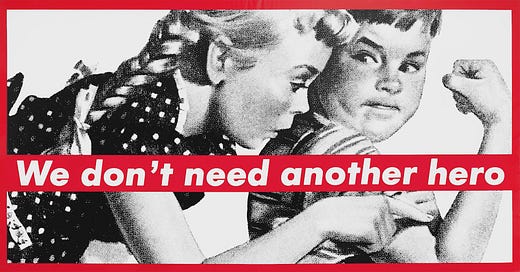








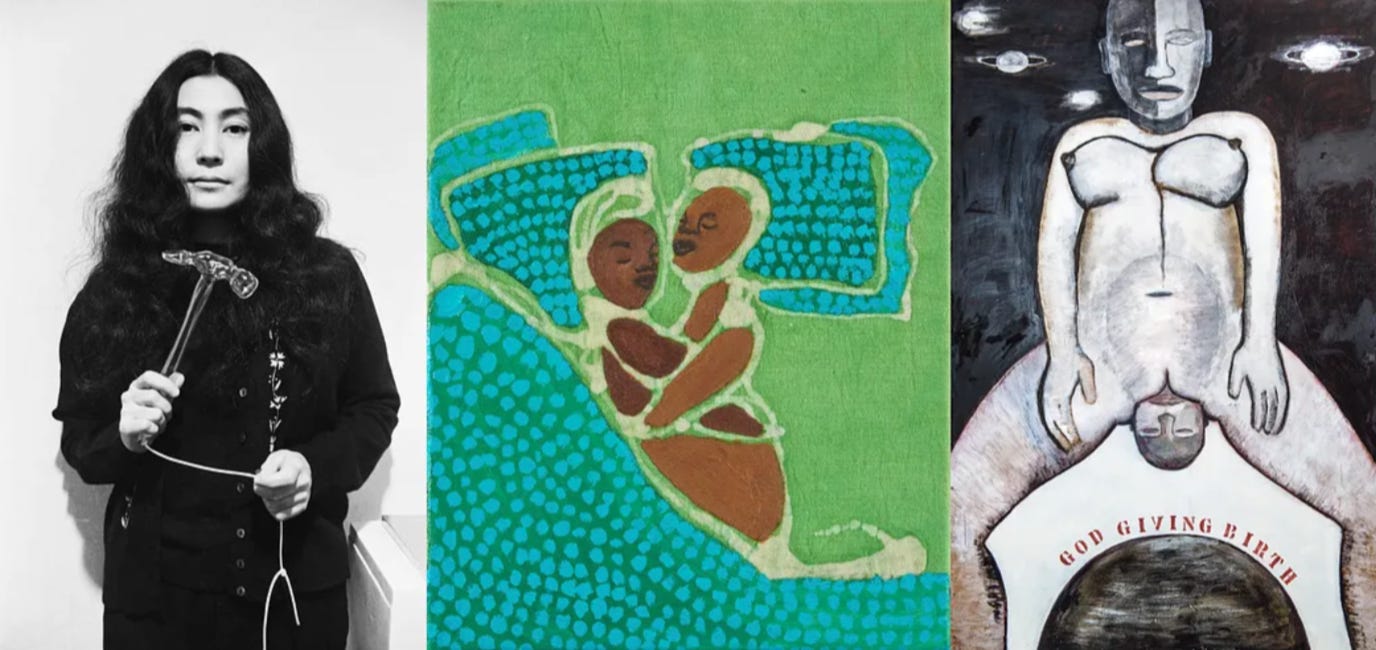

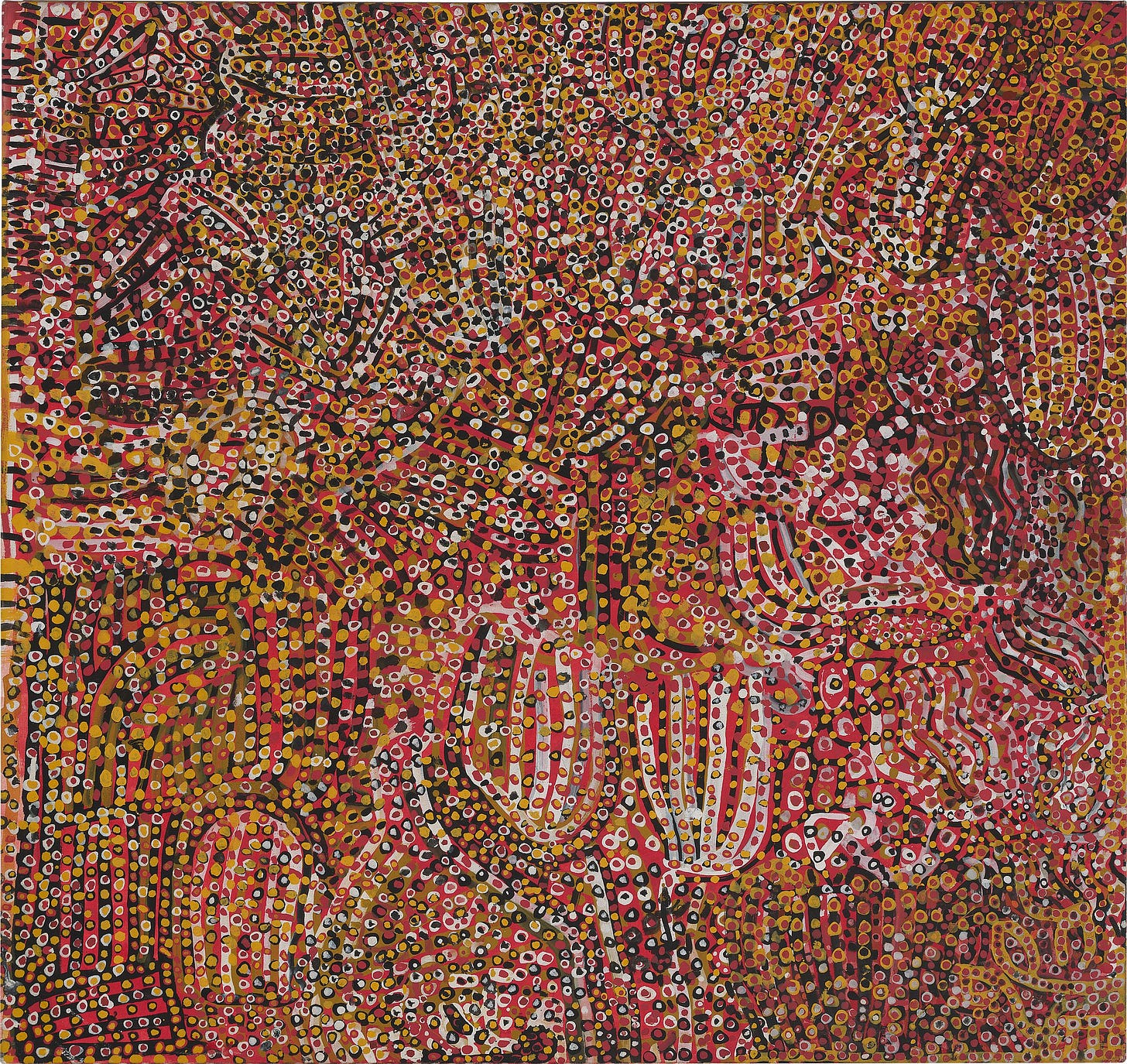
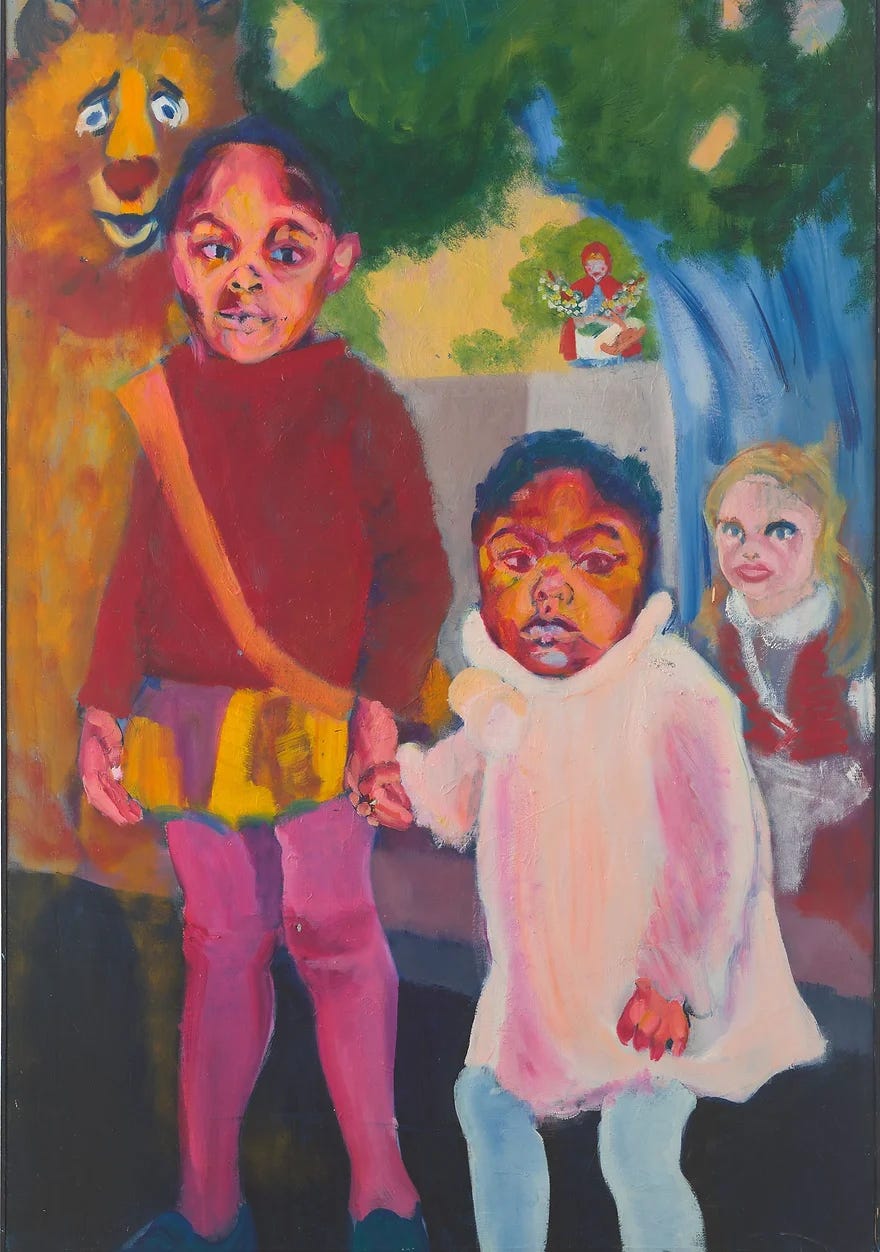
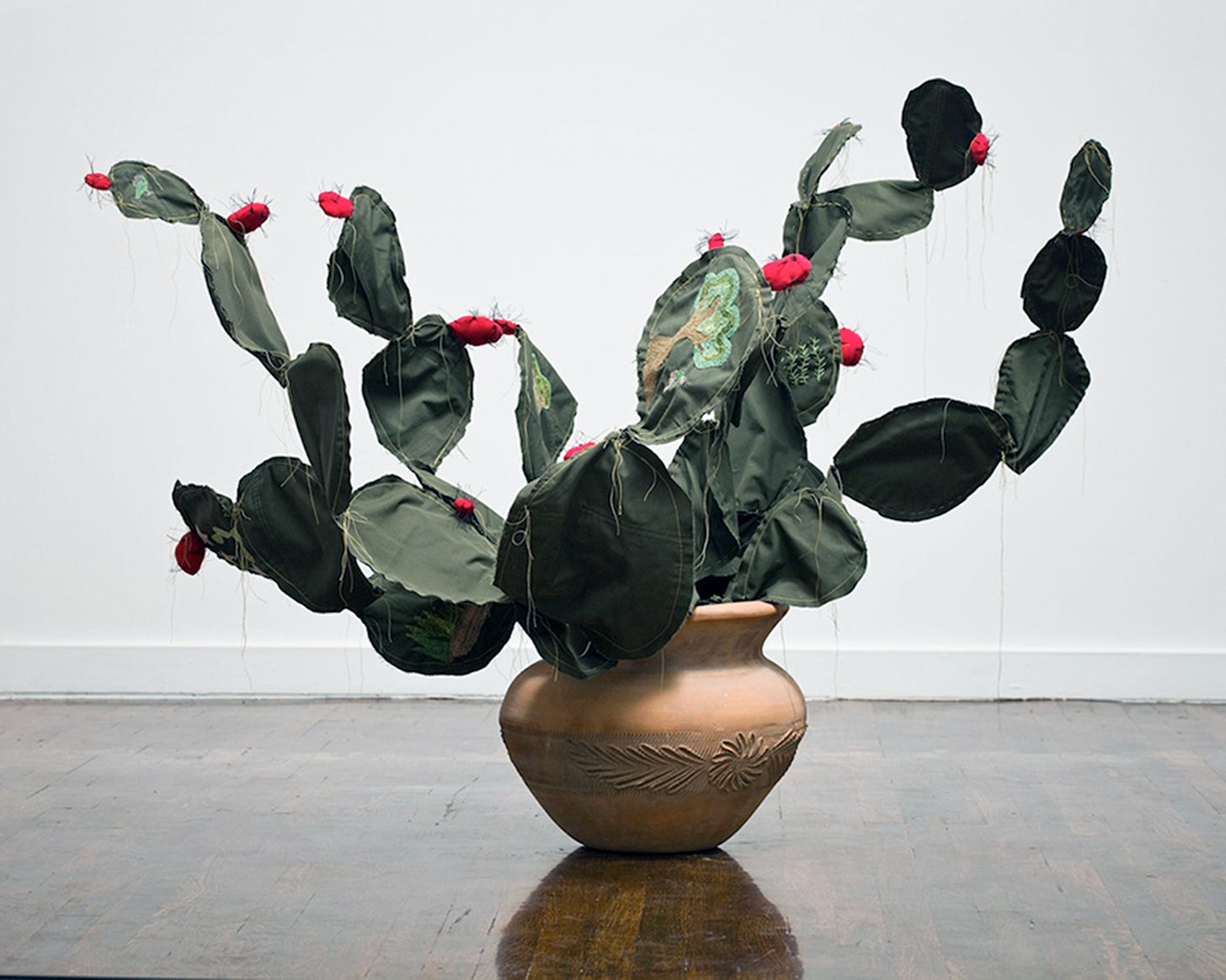


Wonderful news about substantial new womens art gallery looming in the south of France! Enfin😊
what a rich gift this newsletter is - thank you so much for sharing all this ❤️